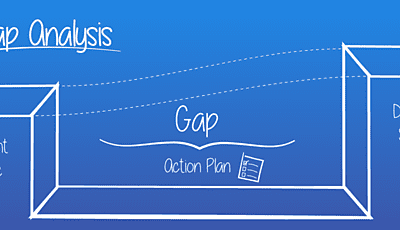You’ve made the decision to leverage a Managed Services Provider (MSP) to transform your company’s IT operations through IT Service Management (ITSM), and now you’re wondering where to start. It’s important to understand how the implementation of ITIL concepts makes IT more service-oriented, as this cultural shift is one of the most important aspects of ITSM (if at this point you’re wondering, “what are ITIL and ITSM, exactly?” click here to read the previous post in our ITSM series).
All ITSM implementations are unique. A solid understanding of both the environment and the goals of your business will determine the overall blueprint for transformation. That said, assessment, design, and implementation are the key starting points for all ITSM engagements.
Assessment
In order to transform your company’s ITSM, an MSP must first assess your business environment. This assessment is primarily data-driven, but the MSP will also consider methodologies and environmental factors. ITSM is more than simply a service engagement—it’s a relationship between an MSP and your company. Before the MSP begins crunching numbers, they should spend time getting to know your business to understand your company’s philosophy, needs, and processes. By establishing a trusting atmosphere with open lanes of communication, the MSP and the client create a collaborative environment in which they can focus on key deliverables.  During the assessment phase, the MSP compiles an assessment report detailing your:
During the assessment phase, the MSP compiles an assessment report detailing your:
- Current State: The MSP gains an understanding of your business goals and strategy, as well as your current IT and business relationship models. Services, teams, line of business (LOB), capabilities, and events/cycles of importance are mapped. Finally, the MSP gleans current performance measurements and data usability information about your current processes.
- Gap Analysis: Using the information gathered during assessment, the MSP identifies the key deliverables necessary for you to transition from your current state to your desired state. The area between your current and desired states—the “gap”—will be bridged through the remainder of the ITSM process.
- Findings and Recommendations: The MSP presents a high-level summary of the gaps and formulates recommendations for improvements specific to your company.
In addition to the assessment report, the MSP should also provide a Business Requirements Document and a proposal for your ITSM design. These documents demonstrate that the MSP understands your business and serves as the foundation for the design and implementation phases of the process.
Design
During the design phase, the MSP creates a blueprint to turn areas for improvement into the foundation of a service-oriented ITSM design. This blueprint focuses on operational findings—primarily on gaps identified during the assessment phase. However, you prioritize the gaps that you would like to close. The solution design is holistic and cross-functional, as it incorporates processes, teams, services, and information assets—all of which are critical to success. To design a tailored and effective IT solution, the MSP should:
- Review assessment findings
- Facilitate solutions through proof-of-concept models and regular workshops
- Design the service model, associated processes, and roles and responsibilities
- Agree upon and document service level objectives
- Establish success factors and key performance indicators (KPIs)
- Validate usability of data sources
- Design the analytic workflow
- Create a measurement plan
Implementation
Once the MSP has assessed your current state and designed a plan to improve your organization’s ITSM, the MSP works with you to implement the proposed solutions. During this stage, the MSP builds the identified proof-of-concept designs, tests them, and rolls them out across your organization. Additionally, the MSP provides in-depth training and self-service documentation for your employees. This documentation ensures that all operational processes associated with the ITSM transition are captured and repeatable. Finally, the MSP deploys a service performance and health toolset to facilitate measurement and ongoing service improvement.
What Happens Next?
Now that the MSP has assessed your organization, designed a solution, and implemented that design, it might seem like the ITSM process is over. However, one of the most critical components of ITIL is the ongoing improvement of ITSM. To ensure service quality, your MSP should continue to work with you to improve IT processes within your organization. Stay tuned for the third post in our ITSM series to learn how to improve through enhancement, analytics, and data-driven processes.






